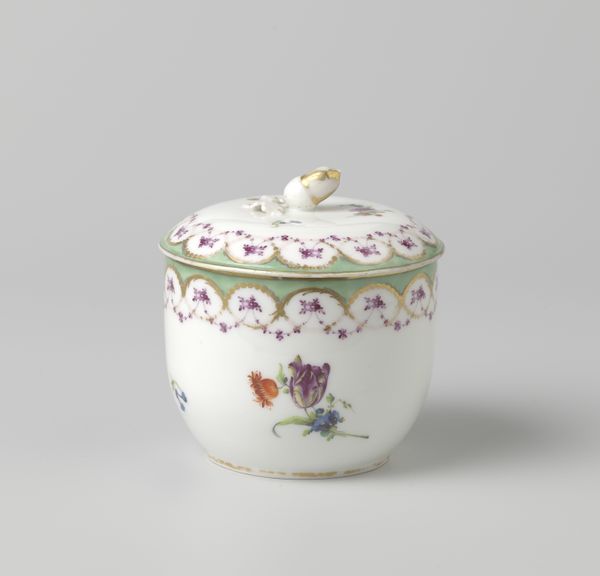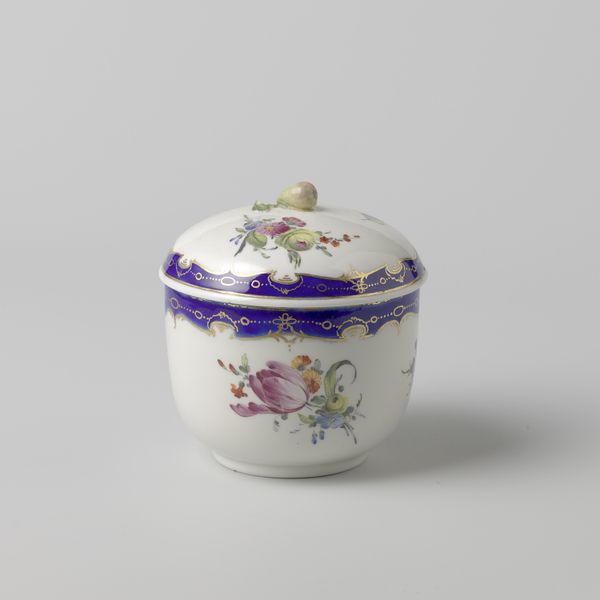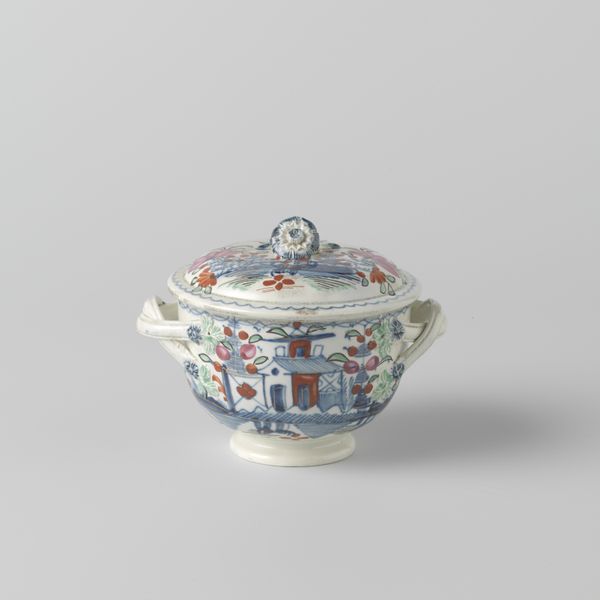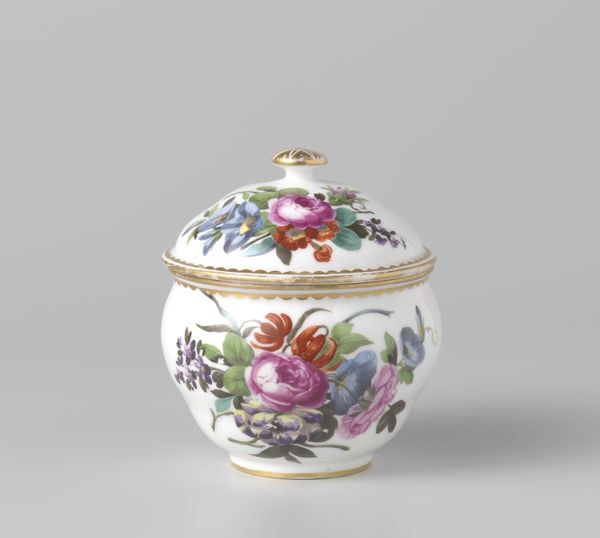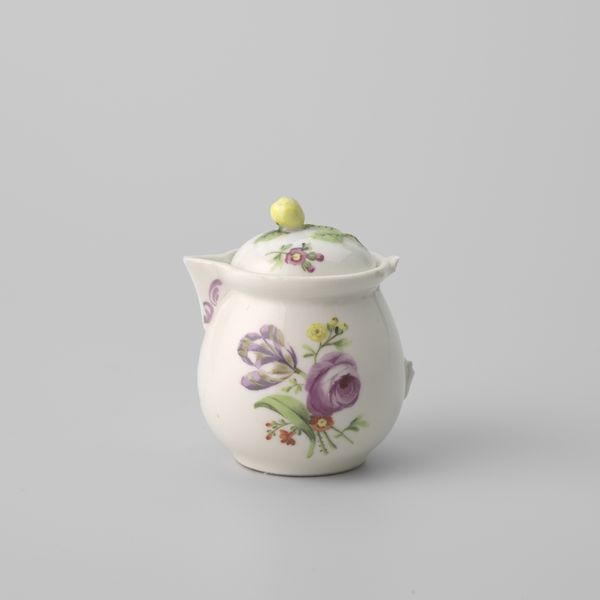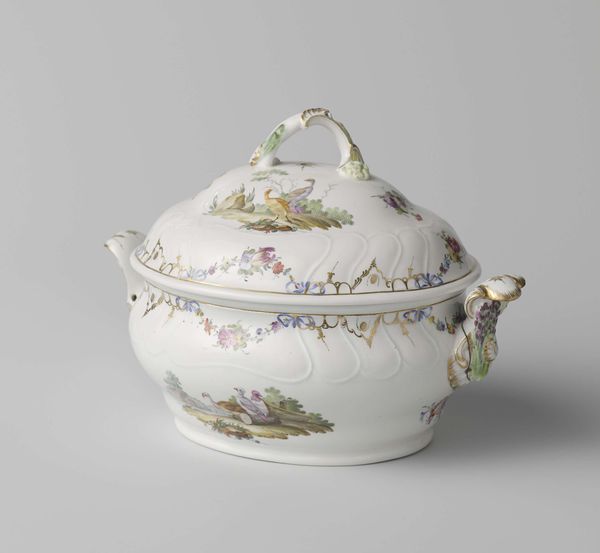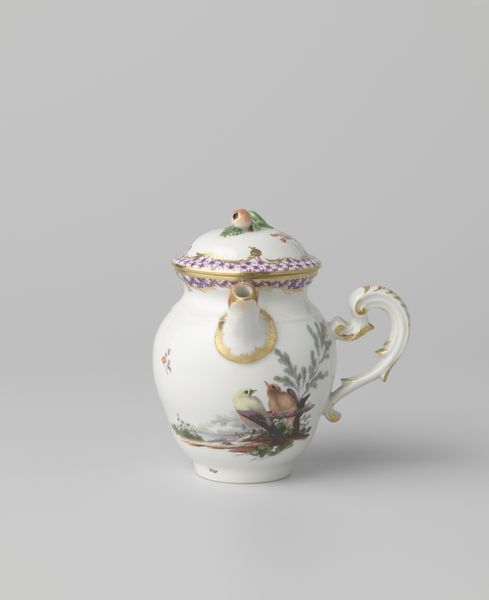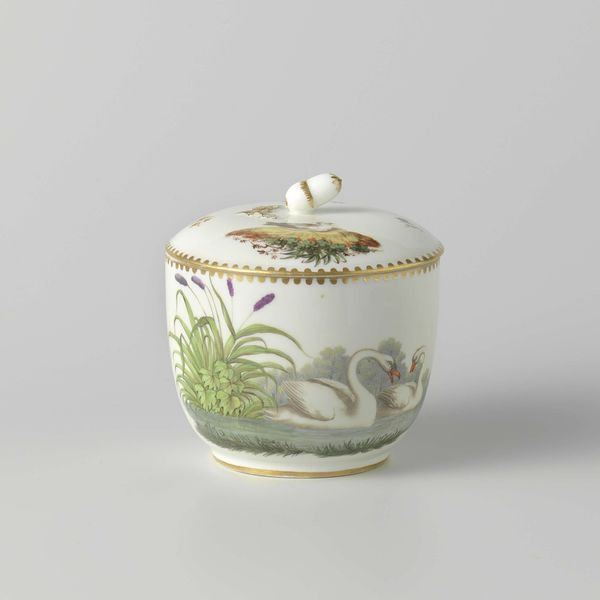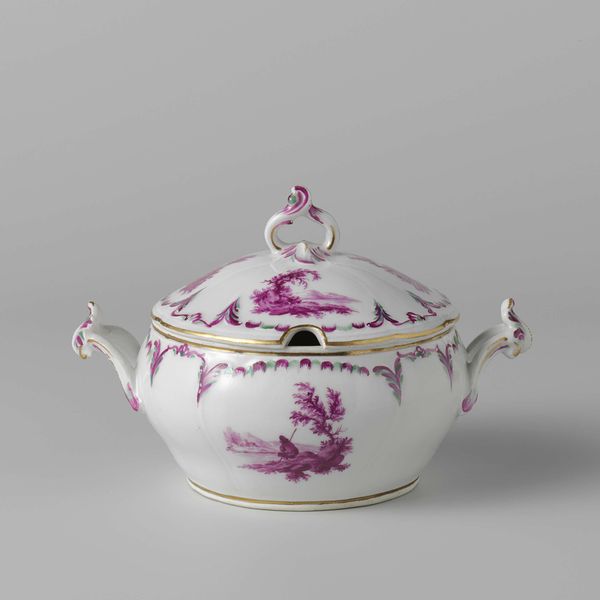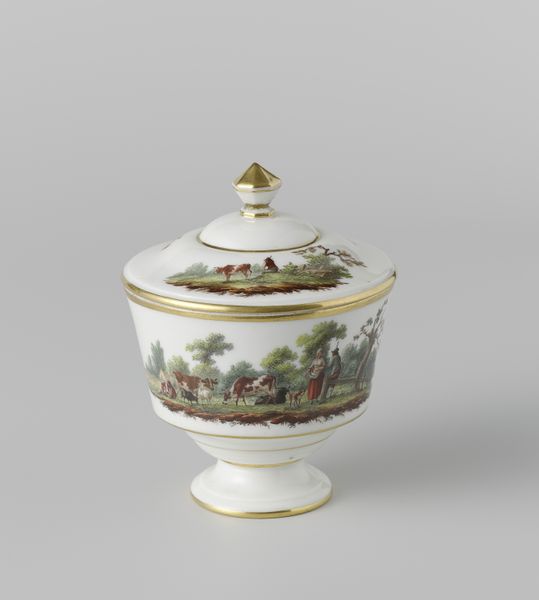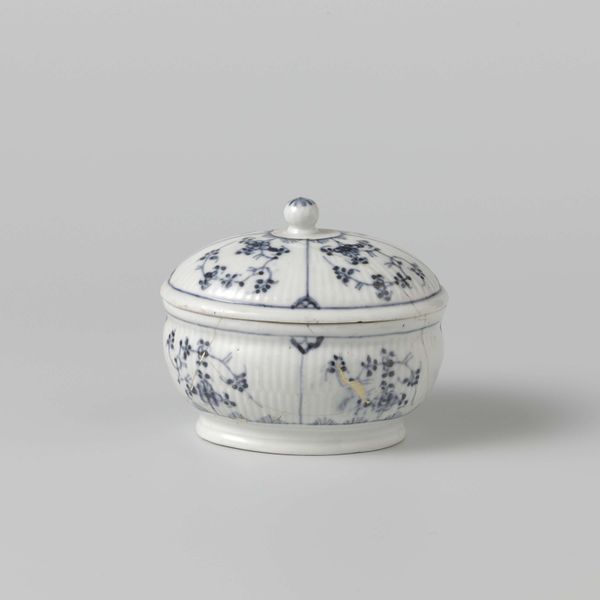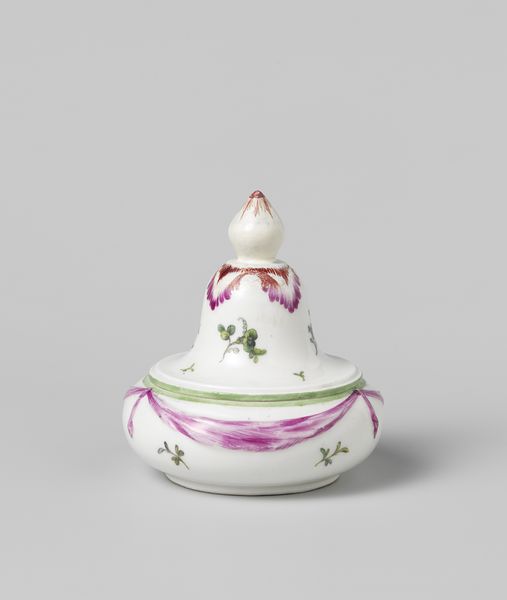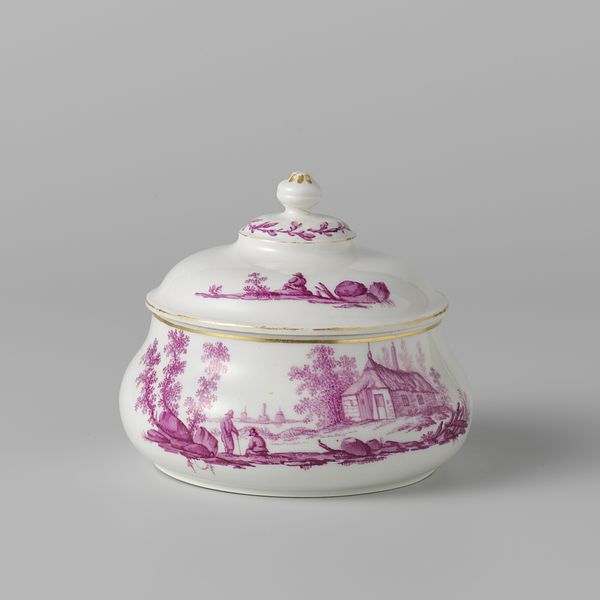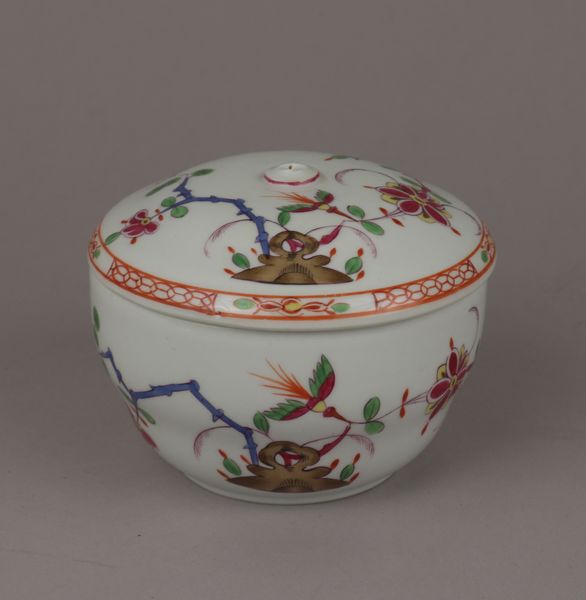
Sugar bowl with a landscape and flower sprays c. 1780
0:00
0:00
Dimensions: height 5.4 cm, diameter 8.1 cm, diameter 5 cm
Copyright: Rijks Museum: Open Domain
This porcelain sugar bowl, adorned with landscape scenes and delicate floral sprays, was crafted by the Königliche Porzellan Manufaktur. Porcelain production was a transformative industry, one deeply entangled with social hierarchies and colonial economies. Consider for a moment the labor that went into producing this object. In the 18th century porcelain was known as "white gold," and it became a potent symbol of European power and refinement. Its production relied on the exploitation of global resources and trade routes, often obscuring the human cost behind its polished surface. Sugar itself, once a rare luxury, had become a staple, fueled by the brutal system of slavery in the Americas. This bowl invites us to reflect on the complex web of connections between luxury, labor, and power. While it presents a vision of pastoral beauty, it also speaks volumes about the social and economic systems that shaped its creation and use. It's a reminder that even the most exquisite objects carry the weight of history, prompting us to consider the stories they tell and the ones they leave untold.
Comments
No comments
Be the first to comment and join the conversation on the ultimate creative platform.
